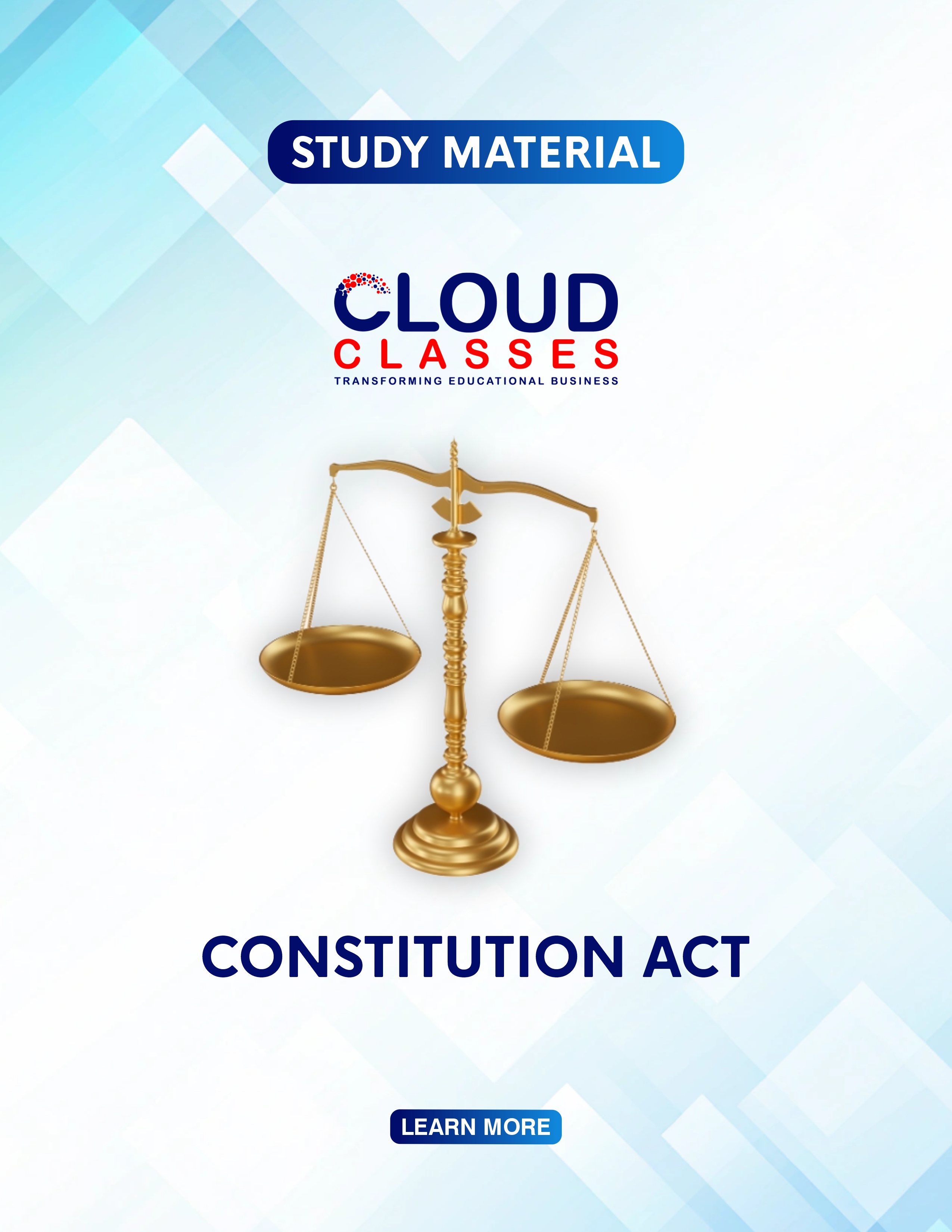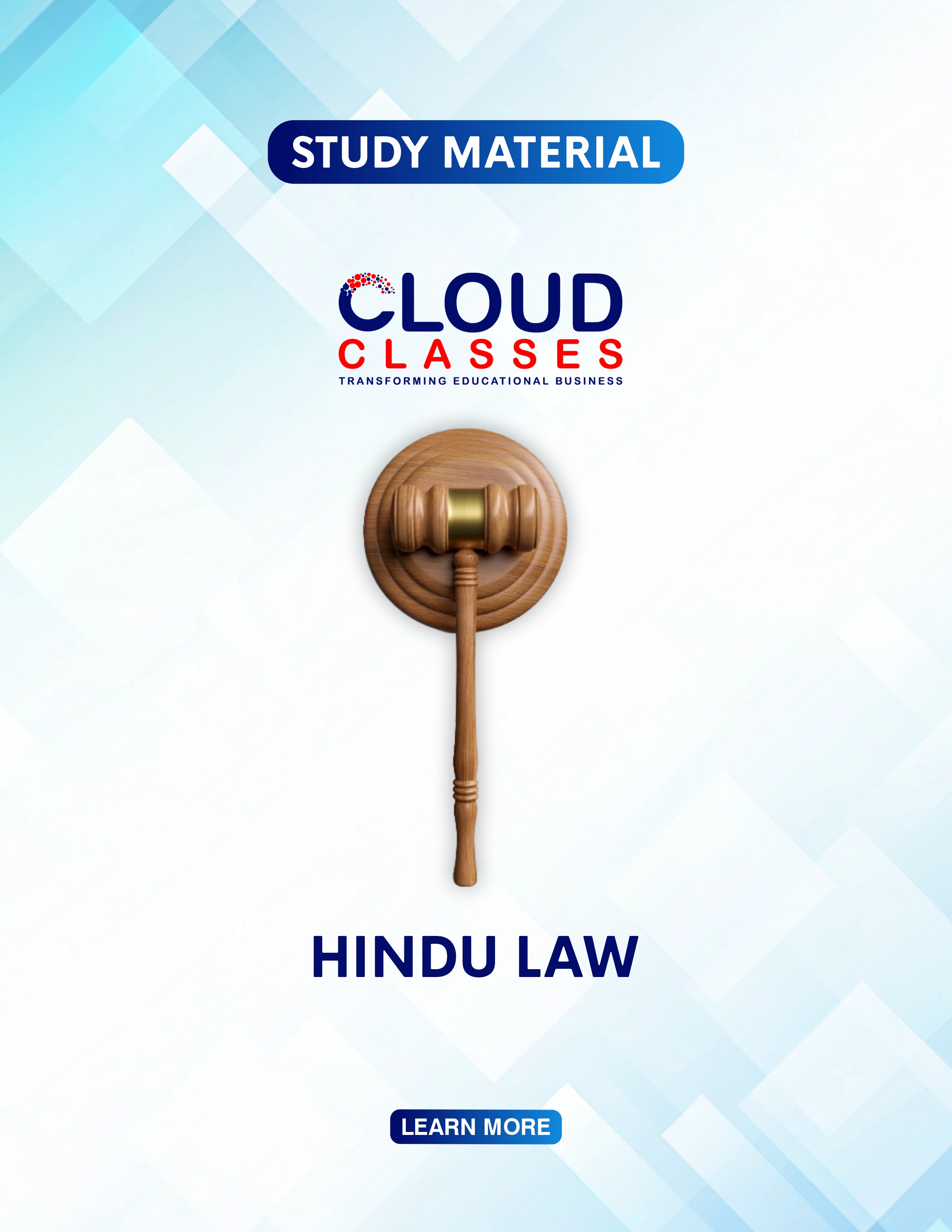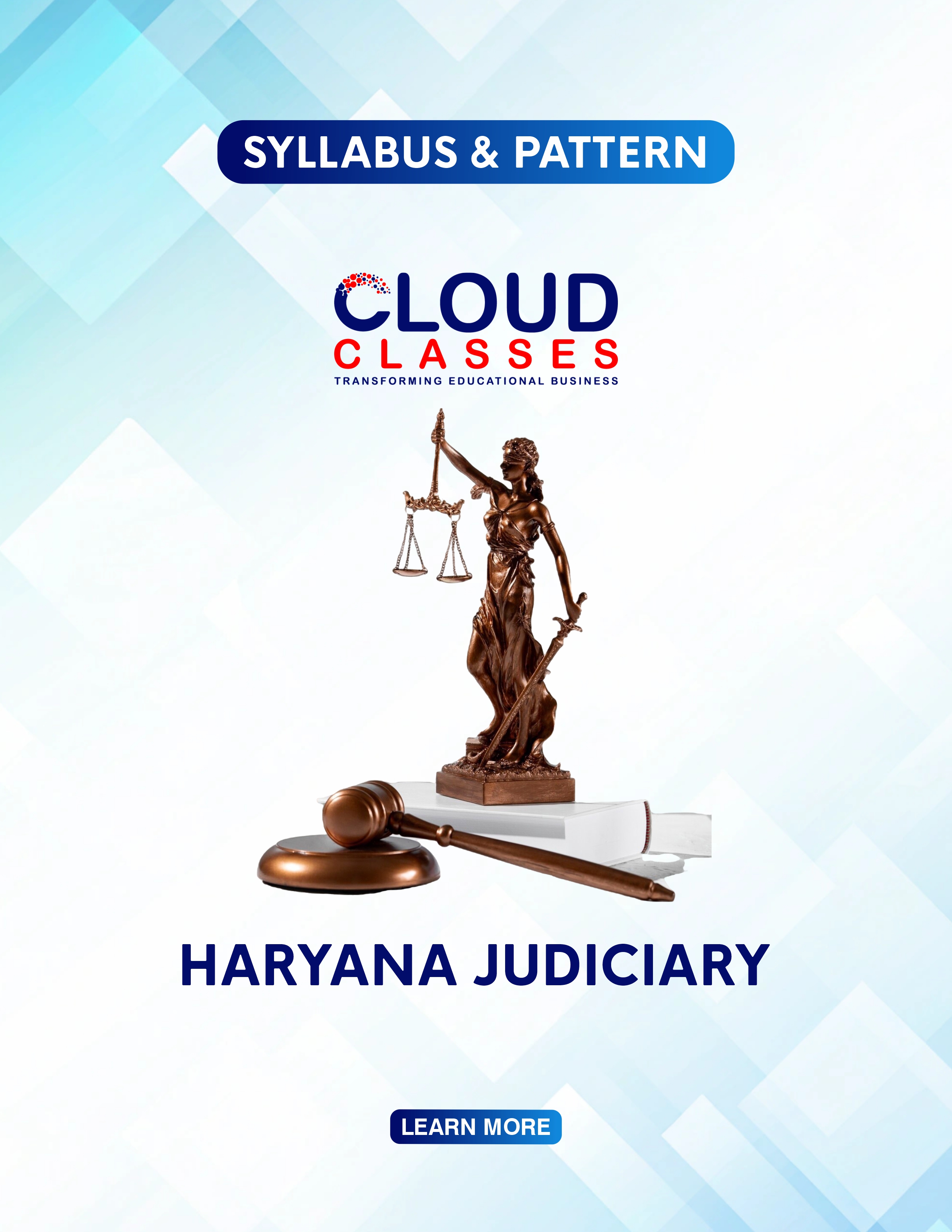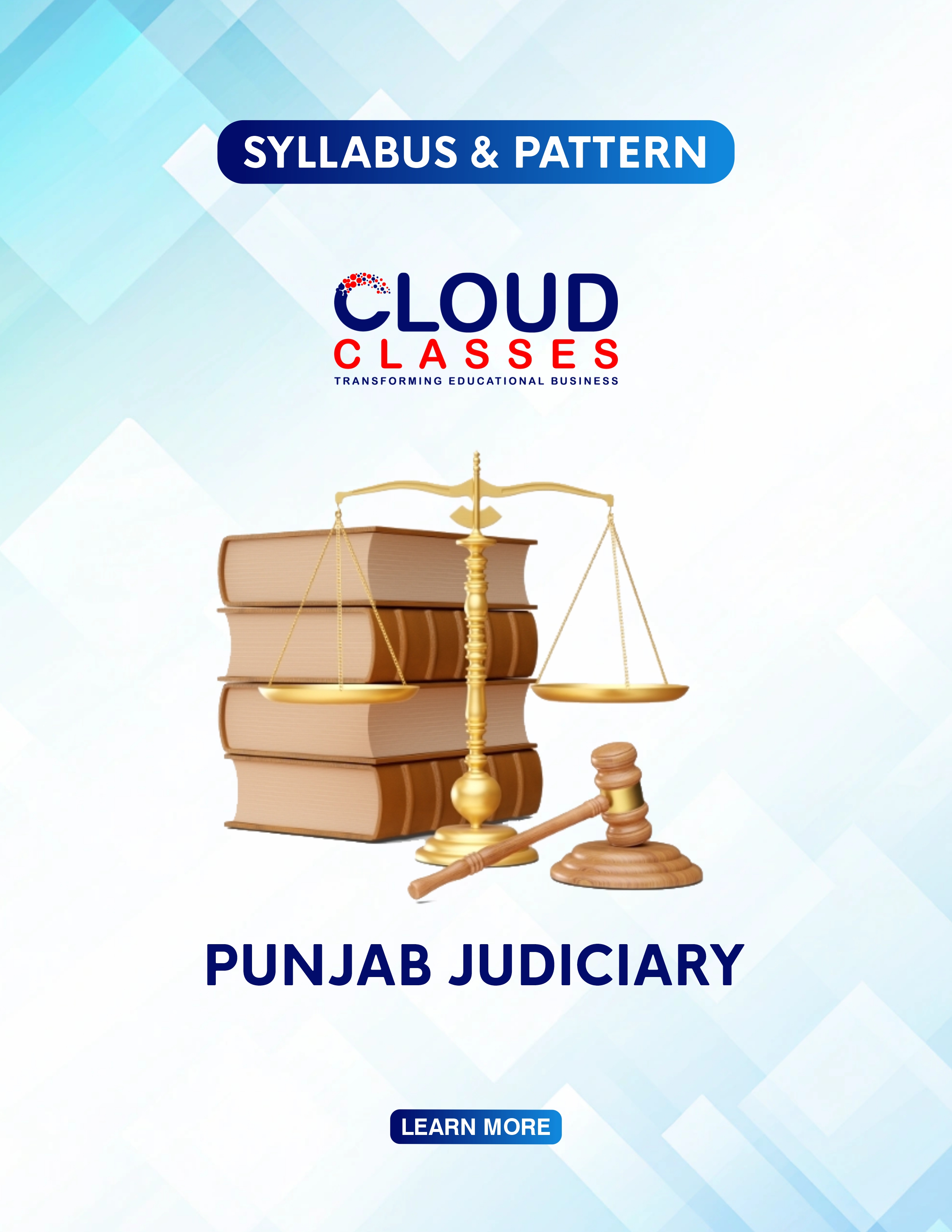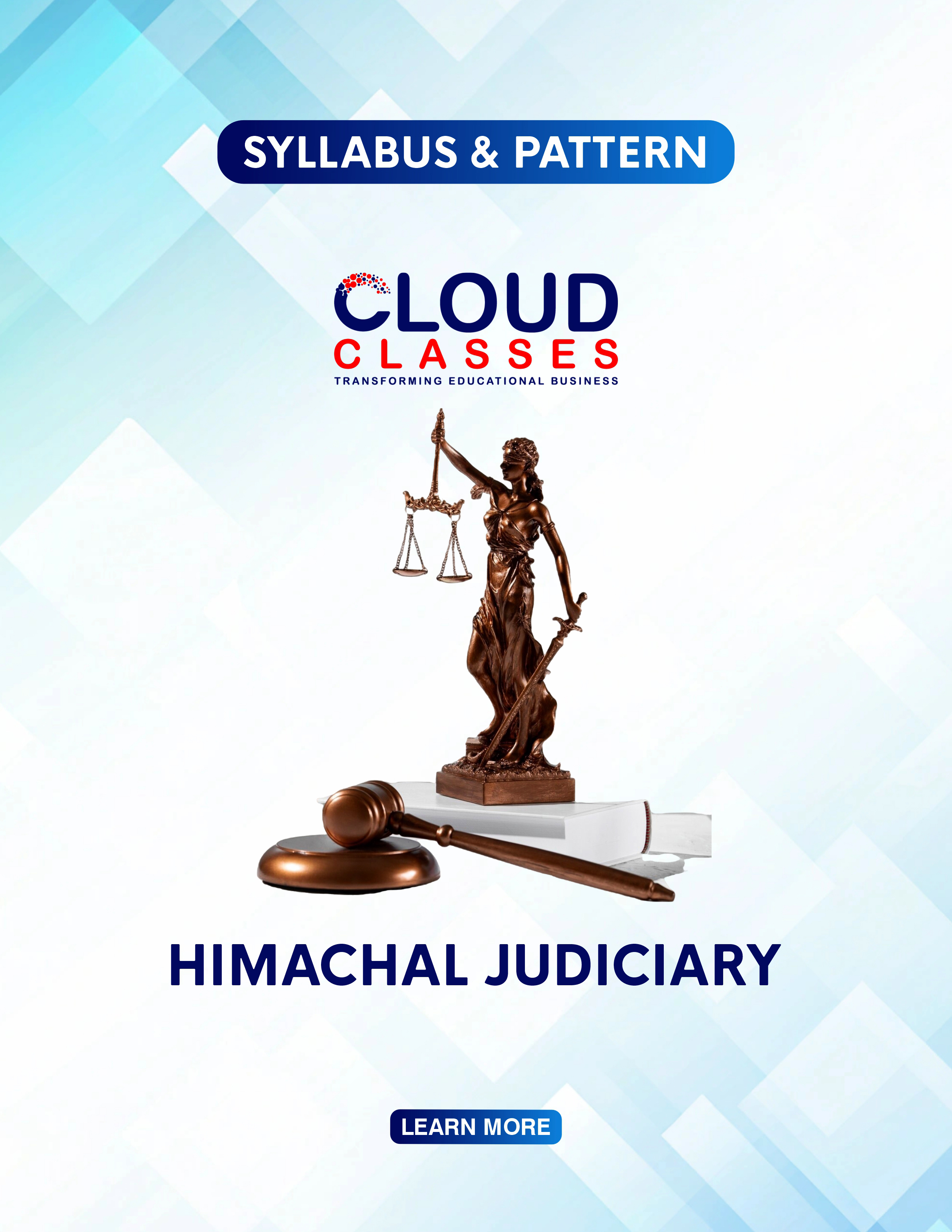INTRODUCTION ABOUT THE INDIAN CONSTITUTION
The Constitution of India is the supreme law of an independent India. Parliament cannot override it. It has the distinction of being the longest written constitution of any democratic country on the earth. A Constitution is a set of laws and rules, setting up the machinery of the government of a State which defines and determines the relations between the different institutions and areas of the government, the executive, the legislature and the judiciary, the central, the regional and the local governments. Every Constitution aims to build up a governmental structure based upon certain basic and well established principles.
INDIA is a Sovereign Socialist Secular Democratic Republic with a parliamentary system of government. The Republic is governed in terms of the Constitution of India which was adopted by the Constituent Assembly on 26th November, 1949 and came into force on 26th January, 1950. India celebrates its constitution on 26 January as Republic Day. It was adopted by the Constitution Assembly. Dr. B. R. Ambedkar, the chairman of the Drafting Committee, is widely considered to be the architect of the Constitution of India.
The constitution replaced the Government of India Act 1935 as the country's fundamental governing document, and the Dominion of India became the Republic of India. To ensure constitutional autochthony, its framers repealed prior acts of the British parliament in Article 395. The world’s longest constitution is the Indian’s constitution. At its commencement, it had 395 articles in 22 parts and 8 schedules. It consists of approximately 145,000 words, making it the second largest active constitution in the world. Currently, it has a preamble, 25 parts with 12 schedules, 5 appendices, 448 articles, and 101 amendments.
AIM AND OBJECTIVES OF INDIAN CONSTITUTION
The framers of the Constitution were concerned about the aspirations of the people, integrity and unity of the country and establishment of a democratic society. Different members of the Constituent Assembly held different ideological views. Some of them were inclined to socialist principles still others laid emphasis on Gandhian thinking. Most of them agreed to give India a ‘Constitution’ which will fulfill the cherished ideals of the people.
Hence an ‘Objective Resolution’ moved by Pandit Jawaharlal Nehru in the Constituent Assembly on 17 December, 1946 which was almost unanimously adopted on January22, 1949. In the light of these ‘Objectives’ the Constituent Assembly completed its task by November 26, 1949. The Constitution was enforced with effect from January 26, 1950. From this auspicious day India became a Republic. Exactly twenty years before the first independences day was celebrated on January 26, 1930 as decided by the Lahore Session of the Congress on December 1929. Hence, January 26, was decided as the day to enforce the Constitution of India.
Pandit Jawaharlal Nehru commenting on the aforesaid Resolution said: -‘Objective Resolution’ is something more than a resolution. It is a declaration, a firm resolve, a pledge, an undertaking and for all of us a dedication.’
The preamble contains the basic objectives of our constitution that is to secure all the citizens of the country as socially, economically and politically. It says Justice to be given to the people, Liberty and fraternity to be given to the people, equal status and opportunity. No one should be treated on a religious basis and all should be given equal opportunity. This would also lead to the unity and integrity of the nation.
FRAMING OF CONSTITUTION
The Indian national congress had officially, for the first time, demanded a constituent assembly in 1935, the idea was the brainchild of M.N Roy. The British government accepted the demand in the ‘August Offer’ of 1940 and finally ‘the Cripps Proposal’ on the framing of constitution came out in 1942.
The Constitution of India was framed by a constituent Assembly set up under the Cabinet Mission Plan. The constituent assembly came into existence in November, 1946. The constituent assembly drafted the constitution. Its main features were:
- Total strength=389.
Out of these 296 were allotted to British-India and 93 to Princely states. - Every province and Princely state was allotted seats in proportion to their population.
- The seats for British were divided among Muslims, Sikhs and General.
- The representatives from each community were elected by voting in the provincial legislative assembly.
- The heads of Princely states nominated their members.
The elections were held in July-August, 1946 and INC won208 seat, Muslim league won 73 seats and Small groups and independents won 15 seats.The Assembly held its first meeting on December 9, 1946, and elected Dr. Sachhidannand Sinha, the oldest member of the Assembly as the Provisional President. On December 11, 1946 the Assembly elected Dr. Rajendra Prasad as its permanent Chairman. The Constituent Assembly set up 13 Committees for framing the constitution. On the basis of the reports of these committees, a draft of the constitution was prepared by a seven-member. Drafting Committee worked under the Chairmanship of Dr. B.R. Ambetkar. The seven members of the committee were:
1. Dr. B R Ambedkar (Chairman)
2. N Gopalaswamy Ayyangar
3. Dr. K M Munshi
4. T T Krishnamachari
5. Syed Mohammmad Sadullah
6. N Madhav Rau
7. Alladi Krishnaswamy Ayyar
COMMITTEES OF THE CONSTITUENT ASSEMBLY
The Constituent Assembly had a total of more than fifteen Committees, prominent of which were:
- The Drafting Committee,
- the Union Power Committee,
- the Union Constitution Committee,
- the Advisory Committee on Minorities and Fundamental Rights,
- the Committee on Chief Commissioner’s Provinces,
- the Committee on Financial Provisions of the Union Constitution
- the Advisory Committee on tribal Areas
These Committees submitted their reports between April – August, 1948 which were considered by the Constituent Assembly. On the basis of these decisions, the final shape and form was given by Dr. B. R. Ambedkar and his colleagues in the Drafting Committee. The draft constitution was published in January, 1948 and people were given eight months to discuss the draft and purpose amendments.
Enactment and enforcement of the constitution took place on November 26, 1949 and January 26, 1950, respectively. However, some parts had come into force on 26 November, 1949 itself with the passing of the motion ‘the constitution as settled by the assembly be passed’. But Provisional parliament and temporary and transitional provision came into force with immediate effect viz. from November 26, 1949.
The constitution of India was not are original document. The framers of the constitution freely borrowed the good features of the Constitutions. However, while adopting these features they made necessary modifications for its suitability to the Indian conditions and avoided their defects.
CRITICS ABOUT THE CONSTITUENT ASSEMBLY
There are a few grounds on which the critics evaluate the constituent assembly. These are:
1. Some argued that the constituent assembly was not a representative body since its members were not directly elected by the people of India which should have been valid on the basis of a universal adult franchise.
2. Critics also suggested that the constituent assembly was not a sovereign body since it was created by the British government and also held its sessions with the government’s permission.
3. Granville Austin called the constituent assembly a ‘one party body in a one party-country’. Critics sharing his ideas believed the assembly was dominated by the congress.
4. Some critics called it an all Hindu body. They argued that it represented only the major community of the country.
ACTS BEFORE THE CONSTITUTION OF INDIA/ HISTORICAL DEVELOPMENT
The historical underpinnings and evolution of the India Constitution can be traced to many Regulations and Acts passed before Indian Independence such as –
- Regulating Act of 1773 2.
- Pitt’s India Act of 1784 –
- Charter Act of 1833
- Government of India Act, 1858
- Indian Councils Acts, 1861
- The Indian Councils Act, 1892
- The Indian Councils Act, 1909
- Government of India Act, 1935
- Indian Independence Act, 1947
Some important constitutional acts during British rule are as follows:
1. Regulating Act of 1773This was the first intervention of the British government to regulate the affairs of the East India Company in India. It made the Governor of Bengal the ‘Governor-General of Bengal’ and an executive council to aid and assist him. The first Governor-General was Lord Warren Hastings. It prohibited the servants of the British East India Company from engaging in any private trade or accepting bribes.
It also provided for the formation of a supreme court at Calcutta It provided for establishment of a Supreme Court at Calcutta (1774) comprising one Chief Justice and three other judges. Lord Elijah Impey was the first Chief Justice.
2. Pitt’s India Act of 1784 –The act was named after William Pitt the Younger, Britain’s Prime Minister when the act was passed. It was passed by British Government to correct the defects of the Regulating Act of 1773. This Act drew a line between the commercial and political functions of the company. Therefore the ‘Court of Directors’ were to manage commercial affairs and the ‘Board of Control’ was to regulate military and civil government and the British Possessions. Governors Councils were established in Bombay and Madras.
3. Charter Act of 1833This Act is known for its centralizing efforts. The Governor-General of Bengal was made the Governor-General of India. He was given legislative powers over the entire India including the Governors of Bombay and Madras. The commercial activities of East India Company were put an end to.
4. Charter Act of 1853The last charter Act brought out separation in the legislative and executive functions of the Governor-General’s council. The Civil services were made accessible to the Indians. Local representation of 4 members was provided in the Central Legislative Council.
5. Government of India Act of 1858 –This act is government of India because it was enacted in wake of revolt of 1857. It abolished British East India Company and transferred the power of government, territories and revenues of India from East India Company to the British crown. It changed the designation of governor-general of India to that of viceroy of India and the powers of the British crown were to be exercised by secretary of state for India. A 15-member council is set up to assist the secretary of state, the secretary of state in council, as a body corporate capable of sue and being sued in India and in England. Lord Canning became the first viceroy of India.
6. Indian Councils Act of 1861Some Indians were to be nominated by the Viceroy in the Council as non-official members. Some decentralization was undertaken by reverting the powers back to Bombay and Madras presidencies. New legislative councils for Bengal, North-West Frontier Province and Punjab were created.
7. Indian Councils Act of 1909This Act is also known as the Morley- Minto Reforms. It provides direct elections to legislative councils and first attempt at introducing a representative and popular element. It changed the name of the Central Legislative Council to the Imperial Legislative Council. The member of the Central Legislative Council was increased to 60 from 61. It introduced a system of communal representation for Muslims by accepting the concept of ‘separate electorate’. Viceroy was given powers to make rules for transaction of business in the council and to issue ordinances. For the first time, Indians were appointed to the Executive Council of Viceroy. Satyendra Sinha was the law member.
8. Government of India Act 1935The Government of India Act, 1935 was passed by British Parliament in August 1935. The Government of India Act, 1935 derived material from four key sources viz. Report of the Simon Commission, discussions at the Third Round Table Conference, the White Paper of 1933 and the reports of the Joint select committees. This act ended the system of diarchy introduced by the Government of India Act 1919, and provided for establishment of a Federation of India to be made up of provinces of British India and some or all of the Princely states. However, the federation never came into being as the required number of princely states did not join it. Salient Features of the Government of India Act 1935 were as follows:
1. It provided for the establishment of an All-India Federation consisting of provinces and princely states as units. The Act divided the powers between the Centre and units in terms of three lists—Federal List (for Centre, with 59 items), Provincial List (for provinces, with 54 items) and the Concurrent List (for both, with 36 items). Residuary powers were given to the Viceroy. However, the federation never came into being as the princely states did not join it.
2. It abolished diarchy in the provinces and introduced ‘provincial autonomy’ in its place. The provinces were allowed to act as autonomous units of administration in their defined spheres. Moreover, the Act introduced responsible governments in provinces, that is, the governor was required to act with the advice of ministers responsible to the provincial legislature. This came into effect in 1937 and was discontinued in 1939.
3. It provided for the adoption of diarchy at the Centre. Consequently, the federal subjects were divided into reserved subjects and transferred subjects. However, this provision of the Act did not come into operation at all.
4. It introduced bicameralism in six out of eleven provinces. Thus, the legislatures of Bengal, Bombay, Madras, Bihar, Assam and the United Provinces were made bicameral consisting of a legislative council (upper house) and a legislative assembly (lower house). However, many restrictions were placed on them.
5. It further extended the principle of communal representation by providing separate electorates for depressed classes (scheduled castes), women and labour (workers).
6. It provided for the establishment of a Reserve Bank of India to control the currency and of the country.
7. It provided for the establishment of not only a Federal Public Service Commission but also a Provincial Public Service Commission and Joint Public Service Commission for two or more provinces.
8. It extended the franchise. About 10 per cent of the total population got the voting right
9. Indian Independence Act of 1947 –The British Prime Minister Clement Atlee on February 20, 1947 declared that the British rule in India would end by June 30, 1948. On June 3, 1947 Lord Mountbatten, the viceroy of India announced the Mountbatten Plan for the transfer of power and partition of India. The plan was accepted by the Congress and Muslim League. Immediate effect was given to the plan by enacting the important features of the Act are as follows:
1. This Act declared India as an Independent and sovereign state from August 15, 1947.
2. It created two independent dominions of India and Pakistan.
3. Till 1947, the Government of India functioned under the provision of 1919 Act only and not the 1935 Act.
4. This act designated the Governor-General of India and the Provincial Governors as the Constitutional heads. It also abolished the office of Viceroy.
5. It assigned dual function to the Constituent Assembly i.e. Constituent and legislative functions.
6. All treaty relations with the tribal areas and the princely states were proclaimed to be lapsed from August 15, 1947.
7. It granted freedom to the princely states to join either Dominion of Pakistan or Dominion of India or to remain independent.
8. It dropped the title of Emperor of India from the royal titles of the King of England.
9. It discontinued the appointment to civil services but allows its members appointed before August 15, 1947 to enjoy all benefits that they were entitled to, till that time.
10. It empowered the Constituent Assemblies of the two dominions to frame & adopt any constitution for their respective nations.
This came into force on August 15, 1947. Lord Mountbatten became the first governor-general of India and Pakistan. Jawahar Lal Nehru sworn as the first Prime Minister of Independent India. The Constituent Assembly of India formed in 1946 became the Parliament of the Indian dominion.
ARTICLE 393 OF CONSTITUTION
It provides the name of the Constitution is “THE CONSTITUTION OF INDIA “.
NEED OF A CONSTITUTION:
CONSTITUTION IS THE BUILDER OF A NATION AND GOVERNMENT WHICH EVERY CITIZEN AGREES. There are following reasons which show the requirement of Indian constitution such as:-
1. Constitution was also needed to assert a government which will work selflessly for the people.
2. Constitution further also protects the liberty, freedom of citizens which they must enjoy as Indians
3. Constitution also gives rights and duties to the citizens of the country and government ensures that rights are being enjoyed.
4. For a country like India with greater population, different people have different opinions and with people changing, the way of living might change if there are no proper rules to govern.
5. Constitution was also necessary to protect the rights that citizens of India must enjoy.
6. It was also necessary to make sure that No Indian citizen will suffer discrimination, injustice based on his caste, creed, and religion.
7. It was also necessary to make sure that No person either Indian or other will disrespect the nation, it's principles.
8. Constitution also helps in correct administration by constituting the government into various forms like central, state. It helps to have a acceptable governance, fair administration and makes country a better place to live in.
SAILENT FEATURES OF INDIAN CONSTITUTION
The constitution of India is supreme law of land. It is a document through which government system works. It is unique in its content and spirit. The constitution of India has borrowed many features from different constitution of the world, but it has it has several features which distinguish it from the constitutions of other countries. The salient features of Indian constitution are as follows:
1. Lengthiest Written Constitution-
It is lengthiest of all the written constitutions of the world. Originally it contained a Preamble, 395 Articles divided into 22 Parts and 8 Schedules but Now Constitution of India has 448 articles in 25 parts and 12 schedules. It took the Assembly 2 years, 11 months and 18 days to write and enact the Constitution.
2. Made from different sources
Different parts of our Constitution are taken from various countries. The maker of our Constitution took the structural part of the Constitution from the Government of India Act, 1935. Following are the various sources of Indian Constitution:
CONSTITUTION OF INDIA: DRAWN FROM VARIOUS SOURCES
| S. No | Countries | Borrowed Features of Indian Constitution |
|---|---|---|
| 1. | Australia | (a) Concurrent list (b) Freedom of trade, commerce, and intercourse (c) Joint-sitting of the two Houses of Parliament |
| 2. | Canada | (a) Federation with a strong Centre (b) Vesting of residuary powers in the Centre (c) Appointment of state governors by the Centre (d) Advisory jurisdiction of the Supreme Court |
| 3. | Ireland | (a) Directive Principles of State Policy (b) The nomination of members to Rajya Sabha (c) Method of election of the president |
| 4. | Japan | Procedure Established by law |
| 5. | Soviet Union (USSR) (now, Russia) | (a )Fundamental duties (b) Ideals of justice (social, economic, and political) in the Preamble |
| 6. | UK | (a) Parliamentary government (b) Rule of Law (c) Legislative procedure (d) Single Citizenship (e) Cabinet system (f) Prerogative writs (g) Parliamentary privileges (h) Bicameralism |
| 7. | US | (a) Fundamental rights (b) Independence of judiciary (c) Judicial review (d) Impeachment of the president (e) Removal of Supreme Court and High Court judges (f) Post of vice-president |
| 8. | Germany (Weimar) | Suspension of Fundamental Rights during emergency |
| 9. | South Africa | (a) Procedure for amendment in the Indian Constitution (b) Election of members of Rajya Sabha |
| 10. | France | (a) Procedure for amendment in the Indian Constitution (b) Election of members of Rajya Sabha |
3. Preamble of the Constitution:
The Preamble to the Constitution of India is a well drafted document which states the philosophy of the constitution. It declares India to be a Sovereign Socialist Secular Democratic Republic and a welfare state committed to secure justice, liberty and equality for the people and for promoting fraternity, dignity the individual, and unity and integrity of the nation. The Preamble is the key to the constitution. It states in nutshell the nature of Indian state and the objectives it is committed to secure for the people.
4. Balance between Rigidity and Flexibility-
A rigid constitution is one which requires special procedure for amendment and a flexible constitution is one which allows amendment of constitution as ordinary laws. The Indian constitution is neither rigid nor flexible, it provide two type of amendments under Article 368:
It can be amended by a special majority of Parliament i.e. two third majority of the members of each House present and voting and a majority of more than 50 percent of total members of each house.
It can be amended by a special majority of parliament and with ratification by half of the total states. It is used in constitutional amendment bill which affects federalism.
Constitution can be amended by simple majority (50% of the members present and voting.) but it doesn’t come under the under the article 368.
5. A Federation with strong centralized tendency-
The most remarkable feature of Indian constitution is that being a federal constitution it acquires a unitary character. Indian constitution is described as ‘federal in form but unitary in spirit’. It is called ‘Quasi-Federal’ by K.C Wheare and co-operative federalism by Granville Austin. The term Federation is not used in Indian constitution.
6. Directive Principles of State Policy-
Directive principles of state policy are incorporated in the part IV of the Indian constitution. They are meant for promoting the ideal of social and economic democracy. These are the guiding principles for states to establish a welfare state in India. Directive principles are non justiciable in nature it means that they are not enforceable by the court on their violation.
7. Fundamental Right-
Indian constitution guarantees six fundamental rights to all the citizens of India. It is in the Part-III of constitution.
- Right to Equality(Article 14-18)
- Right to freedom (Article 19-22)
- Right against Exploitation(Article 23-24)
- Right to Freedom of Religion(Article 25-28)
- Cultural and Educational Right (Article 29-30)
- Right to constitutional Remedies(Article 32)
8. Fundamental Duties-
The constitution (42nd Amendment) Act, 1976 has introduced “Fundamental Duties” for citizens on the recommendation of Swaran singh committee. The 86th constitutional amendment act 2002 added one more fundamental duty. The part IV-A of the constitution consist of eleven Fundamental duties.
9. Independent Judiciary-
Indian constitution established a judicial system that is integrated as well as Independent. The constitution has made the following provisions to ensure independence of judiciary.
In India, a single judicial system prevails with the Supreme Court at the top, the State and District High Courts and other subordinate courts below and subject to the supervision of the High Courts.
It is the duty of all levels of courts in India to enforce both central and state laws unlike in the US, where federal courts adjudicate on federal matters and state courts on state matters.
1. Appointment of judges of Supreme Court and High Courts by collegium system
2. Removal of judges in Parliament through an impeachment procedure that is very difficult to pass
3. Supreme Court judges salaries, pensions, and allowances are charged to India's Consolidated Fund
4. Power to punish for self – disregard
5. Ban on judges practice after retirement…etc
10. Judicial Review:
The Constitution is the supreme law of the land. The Supreme Court acts as the guardian protector and interpreter of the Constitution. It is also the guardian of the Fundamental Rights of the people. For this purpose it exercises the power of judicial review. By it, the Supreme Court determines the constitutional validity of all laws made by the legislatures. It can reject any law which is found to be unconstitutional.
11. Judicial Activism:
Currently, Indian judiciary has been becoming more and more active towards the performance of its social obligations. Through Public Interest Litigation system (PIL) as well as through a more active exercise of its powers, the Indian judiciary has been now very actively trying to secure all public demands and needs due to them under the laws and policies of the state.
12. Universal Adult Franchise
Our Constitution makers gave the right to vote to every citizen of India who was above 21 (now age is 18). The western democracy took many years while giving this right to everyone.
13. Single Citizenship
Indian Constitution is having the provision of Single Citizenship. This means that anyone who takes the citizenship of some other country will automatically lose the citizenship of India. This concept of Citizenship is taken from the British Constitution. There are various benefits which citizens can enjoy by simply being a citizen. Right to vote, get elected to posts like President, Member of Parliament are all only available for the citizens of India.
14. Quasi Federal Constitution
Quasi federal means it seems to be federal but it is not completely federal as it is having some serious tilt towards the central government. In the times of emergency, the Central government is having much more powers than the State Governments.
15. Emergency Provisions-
The term emergency may be defined as “circumstances arising suddenly that calls for immediate action by the public authorities under the powers especially granted to them”. The reason behind these provisions is to safeguard the sovereignty, unity, integrity and security of the country, the democratic political system and the Constitution. It converts the federal structure into a unitary one without a formal amendment of the Constitution. There are three types of emergencies under the Indian Constitution namely-
- National Emergency (Article - 352)
- Failure of constitutional machinery in states (Article -356)
- Financial Emergency (Article-360)
16. Local Self Government-
Local Governance in India has been formalized under the Panchayati Raj System since 1992 by adding a new Part IXA. The Panchayati Raj system is a three-tier system with elected bodies at the village, taluk and district levels. In 1992, the 73rd and 74th constitutional amendments were passed by the Parliament.
The 73rd Amendment is about Rural Local Governments (which are also known as Panchayati Raj Institutions. The 74th amendment made the provisions relating to Urban Local Governments (Nagarpalikas).
17. Independent Bodies
Election commission:
The Election Commission ofIndia is an autonomous constitutional authority responsible for administering election processes in India. It administers elections to the Lok Sabha, Rajya Sabha, state Legislative Assemblies in India, and the offices of the President and Vice President in the country. The Election Commission operates under the authority of Constitution per Article 324.
Comptroller and Audit-General of India:
It audits the account of the central and state governments. It is mentioned in the Constitution of India under Article 148 – 151. He is appointed by President of India by warrant under his hand for period of 6 years or up to age of 65 years, whichever earlier.
Union public service commission:
It is to conduct examination for recruitment of All India services and other higher central services. The Article 315 to 323 of the Constitution deals with the appointment of UPSC members, powers and functions of the UPSC.
State public service commission:
A State Public Service Commission performs all those functions in respect of the state services as the UPSC does in relation to the Central service.
18. Special Provisions relating to Scheduled Castes and Scheduled Tribes:
With a view to protect the interests of people belonging to Scheduled Castes and Scheduled Tribes, the Constitution lays down certain special provisions. It provides for reservation of seats in the legislatures for the people belonging to Scheduled Castes and Scheduled Tribes. President can nominate in Lok Sabha not more than two members of the Anglo-Indian Community in case he is of the opinion that this community is not adequately represented in the House.
Reservation of some jobs for the people belonging to SCs, STs and OBCs has also been in operation. The reservation system has been now extended up to the year 2020.Presently, a bill for granting 33% reservation of legislative seats for women is in the process of getting enacted into law. Reservation system is also in existence in the Panchayats and Municipal Councils.
CONCLUSION
Constitution is required because it is a written document set up so that whatever the rules are made will be made by following the structure of the constitution. Our construction is not self-made rather it is made up by taking the good feature of other existing constitutions.




